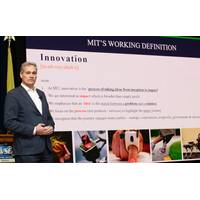
MIT's Dr. Phil Budden Shares Innovation Research with NUWC Division Newport Workforce
Dr. Phil Budden, a senior lecturer at the Massachusetts Institute of Technology’s (MIT) Sloan School of Management, delivered a briefing titled “MIT’s Approach to Innovation” to the Naval Undersea Warfare Center (NUWC) Division Newport workforce on May 7, as part of a monthlong focus on innovation.NUWC Division Newport and MIT have a relationship through the Industrial Liaison Program (ILP), which gives Division Newport scientists and engineers access to a variety of MIT conferences, events, research and webinars. During his visit, Budden also received an overview about Division
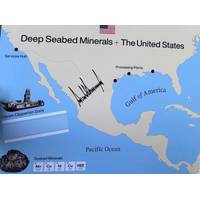
First Deep-Sea Mining Company Asks Trump for International Permit
," said Representative Maxine Dexter, an Oregon Democrat.Privately-held Impossible Metals, which has asked Washington to auction American Samoa's minerals, told the hearing it had no plans to operate without conducting more environmental testing.An engineering expert from the Massachusetts Institute of Technology told the hearing the effects of deep-sea mining may not be as severe as some people have speculated but added the practice requires robust regulation.(Reuters

Schmidt Sciences Fosters AI Research
of Oxford, explores how large language models can create powerful AI agents to act on our behalf and execute plans—including by interacting with each other and cooperating to jointly achieve goals.The 2024 AI2050 Early Career Fellows include:● Sara Beery, assistant professor at the Massachusetts Institute of Technology● Sarah Dean, assistant professor at Cornell University● Tim Dettmers, assistant professor at Carnegie Mellon University● Simon Du, assistant professor at the University of Washington● Gabriele Farina, assistant professor at the Massachusetts Institute of Technology● Anjalie Field
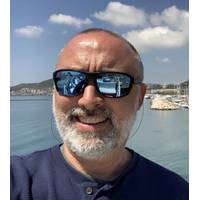
VideoRay Names Snyder Director of Applications Engineering, Integration and Testing
of Jeff Snyder as its new Director of Applications Engineering, Integration and Testing.Snyder began his career with a degree from Duke University before serving as a special operations officer for the US Navy. After his service with the US Navy, he earned a graduate degree from the Massachusetts Institute of Technology (MIT). Now a highly seasoned marine technology professional, Snyder brings to VideoRay over two decades of expertise garnered from leadership and field positions at robotics and technology organizations such as SeaVision Underwater Solutions, L3 Harris-Oceanserver, and Terradepth

Greensea IQ Expands its Plymouth, MA Production Facility
an on-water demonstration as part of the Blue Future Conference held in Plymouth, Massachusetts held at the Cordage Park Marina, Greenea IQ’s on water testing area. In addition to the Bayonet 250 other participants at the demo included Jaia Robotics, SeaTrac, and students from Massachusetts Institute of Technology.Read about the vision of the new Greensea IQ in the MTR100 edition of Marine Technology Reporter.The Everclean hull cleaning robot. Image courtesy Greensea I

Poroy named CEO of Strategic Robotic Systems
and business development initiatives through various campaigns encompassing Undersea Warfare, Maritime Autonomy and Distributed Maritime Operations. Prior to General Dynamics, he held various positions at Bluefin Robotics and Teledyne Technologies. Poroy received his MBA from Massachusetts Institute of Technology, Sloan School of Management, and holds Ocean Engineering degrees from Florida Institute of Technology
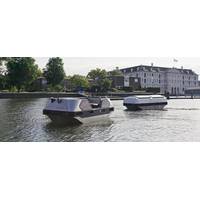
Self-driving 'Roboats' Ready for Testing on Amsterdam's Canals
options."We have a lot of road traffic and congestion, e-commerce, logistics cluttering the small streets in the city," said Stephan van Dijk, Innovation Director at Amsterdam's Institute for Advanced Metropolitan Solutions, which is designing and engineering Roboat with The Massachusetts Institute of Technology (MIT)."At the same time we have a lot of open water available in the canals ... So we developed a self-driving, autonomous ship to help with logistics in the city and also bringing people around."After four years of trials with smaller versions and refinements of the concept
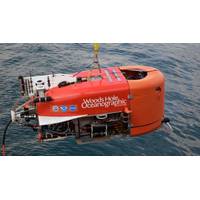
WHOI Robot Takes First Known Automated Sample from Ocean
, they will ultimately need to work independently like this and without the assistance of a pilot,” he says.Moving forward, Camilli will continue working with Billings and colleagues at the University of Michigan, as well as researchers from the Australian Centre for Field Robotics, Massachusetts Institute of Technology, and the Toyota Technological Institute at Chicago to push the automation technology forward. The work will include training ocean robots to see like ROV pilots using “gaze tracking” technology, and building a robust human-language interface so scientists can talk directly
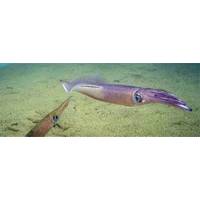
Ocean Noise: Pile Driving Triggers Alarm Responses in Squid
(WHOI) researchers published Dec. 16, 2019, in the journal Marine Pollution Bulletin.“This study is the first to report behavioral effects of pile driving noise on any cephalopod, a group including squid, cuttlefish, and octopuses,” says lead author Ian Jones, a student in the Massachusetts Institute of Technology-Woods Hole Oceanographic Institution Joint Program in Oceanography.Squid use natural alarm and defense behaviors like inking, jetting, and changing color and patterns on their skin for communication and also for survival when they’re trying to avoid capture. Squids’ changeable
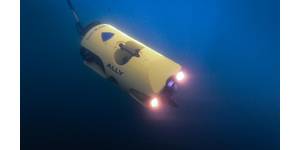
 February 2025
February 2025





